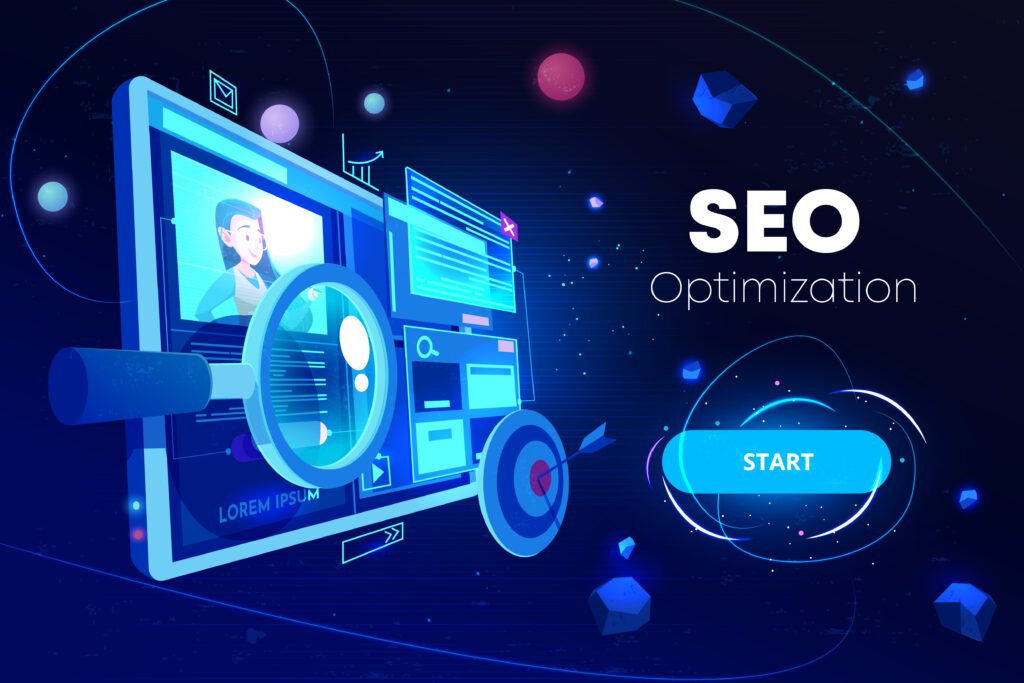9 Best Ways to boost SEO Rankings and Traffic

Introduction
Want to boost your Google ranking and maintain the top position? then remember, improving your SEO ranking is not just about stuffing your website with random keywords or mindless backlink building. It is more about using good strategies tailored to chase results. If you are a total beginner or stuck in the SEO rabbit hole, familiarizing yourself with some tips and SEO best practices will surely give your website the edge it is looking for.
In this blog, we’re going to show you 9 powerful, practical tactics to improve your SEO ranking and drive more traffic. From mastering On-page SEO and Technical SEO as well as employing the right SEO tools and high-performing SEO keywords, every single tactic has been designed to guarantee proper SEO results. Are you ready to learn the most efficient SEO tricks for better performance? Let’s go and level up your traffic—one optimized step at a time.
9 Ways to Improve SEO Rankings and Traffic
9 Ways to Improve SEO Rankings and Traffic Improving SEO ranking is imperative for increasing visibility and driving traffic to your website. By diversifying the studied areas of SEO and implementing well-calibrated actions, you can advance your site. Here are nine results-oriented techniques to increase your SEO ranking and traffic, each with three alternatives to cater to diverse contexts and preferences.
-
Update Your Content Regularly

Updating your content on websites shows search engines that your site is alive and well-maintained. Ensuring that articles have up-to-date information, facts, and even trendy references will help in improving the rank of your site.
Benefits of Updating Content:
- Improved Relevance: Make certain that the content speaks to the issues and interests of the audiences at the present time.
- User Engagement Improvement: Visitors who obtain relevant and current information will spend more time on the site increasing engagement.
- Enhanced Visibility: Fresh content gets preferred and ranked high by search engines improving visibility.
Strategies for Effective Content Updates:
- Regular Audit: Review content periodically to find out what should be updated.
- Use Recent Information: Update content with recent facts, relevant case studies, or even current events.
- Search Engine Optimization: Make changes to ensure that focus keywords, Meta descriptions, and title tags comply with the recommended SEO practices for better SEO Ranking.
-
Target Low-Competition Keywords

Finding keywords that do not have a lot of competition, but many users are searching for them can boost your site in comparison to other competitors.
Advantages of Using SEO Tools
- All-Inclusive Information: Help you understand market trends through search volume, competitiveness, and keyword use.
- Saves Time: Focuses work on strategy instead of spending hours collecting data which is so easily obtained through SEO tools.
- Competitor Evaluation: Analyze what clients consider popular and what keywords competitors use enabling you to strategize better.
Strategies to Low Competition Keywords
- Search Forums or QA Platforms: Look for relevant topics on Reddit or Quora to they often have a lot of content on them, so they may even have community posted questions.
- Look Up Trends: Checking Google Trends will Show what is picking up within a coverage that is low.
- Check Out Social Media For Emerging Keywords: Keeping an eye on Twitter or LinkedIn can be useful due to the conversations out there.
-
Enhance UX to Boost SEO Rankings

Tweaking user experience on a website can single-handedly increase SEO rank, and it is often ignored. Fast, effortless, and convenient websites are browsed best. Visitors staying longer helps your SEO perform better.
Why UX Matters for SEO:
- Helps Lower Bounce Rate: Website navigation speed allows users to stay on for a desired period.
- Proper User Engagement: Proper arrangement of content leads users to engage more.
- Mobile Experience Enhancement: Mobile responsiveness is a very big factor for technical SEO.
Actionable Tips to Improve UX:
- Make sure cues for navigation and internal linking steps are clear (like this example)
- Page speed must be checked and improved with other external tools. Google Page Speed Insights may be useful
- Content formatting must allow for scrolling, and with that, headings, bullet points, and short paragraphs should be provided to the user.
- Ensure design accessibility works useable on all devices
- No disruptive popups that annoy visitors.
-
Optimize Your On-Page for Better Search Visibility

On-page SEO directly impacts how search engines interpret and rank your content. From keywords to metadata, optimizing on-page elements strengthens weak SEO rankings.
Key On-Page SEO Elements to Optimize:
- Title Tags & Meta Descriptions: Capture attention with keyword-aligned title tags that compete for clicks, maximize tag potential.
- Header Tags (H1, H2, H3): Arrangement of the content should make sense from a logical standpoint for users and search engines.
- SEO Keywords Placement: Place keywords in the conclusion, title and within the first 100 words to help search engines naturally retrieve information.
- Image Alt Text: Write descriptions for images using keywords so that you can enhance their visibility on image searches.
- URL Structure: Focus on short and relevant urls packed with keywords (SEO-ranking-tips instead of page?id=1234).
On-Page SEO Best Practices:
- Keep users on your page longer with internal links.
- Provide value using high-quality, original content.
- Enrich the website index with structured data (schema).
- Avoid unnatural tones and keyword stuffing..
-
Build a Strong Technical SEO Base

A well-designed website is vital, but without a well-constructed technical SEO framework, your content is never going to rank where it is supposed to. That is why technical elements are needed to help the search engine crawl, index and understand outline website quickly; all of which enhances ones SEO ranking.
Technical SEO structure refers to non-content factor such as the speed of the website, usability on mobile devices, crawlability and structured data. These enhance backend performance and fall under technical SEO.
Key Technical SEO Elements to Focus On:
- Mobile Responsiveness – Make sure your website properly fits every mobile device.
- Responsive Page Load – Decrease your load time with the use of compression, caching, and optimized images.
- XML Sitemaps – Submit a new sitemap through Google Search Console.
- HTTPS Security – Ensure your website has a valid SSL certificate.
- Broken Links & 404 Error Resolution – Audit your website with SEO tools on a regular basis.
Quick Technical SEO Tips:
- Look for crawl errors on Google Search Console and SEMrush.
- Evaluate pages for duplicate content with SEO tools and combine where appropriate.
- Ensure rich snippets have structured data (schema markup) as documented data.
-
Build Authority with High-Quality Backlinks

Links from other websites are one of the primary factors that increase a website’s rank. When a highly regarded website has a hyperlink directing to your website, it shows the various search engines that your website and the content it provides is reliable.
High-quality backlinks from authoritative websites, news articles, educational websites, and even industry leaders are important since it increases your rank and credibility in the eyes of search engines.
Proven Link-Building Strategies:
- Guest Posting – Publishing relevant articles on industry blogs that link back to your site.
- Create Shareable Content – Infographics and original research pieces are good candidates to earn links automatically.
- Engaging in PR Outreach – Contact journalists/bloggers via Help a Reporter Out (HARO) and similar platforms.
- Fix Broken Backlinks – Contact webmasters who have links on their sites pointing to broken or outdated pages and offer them your new content.
Best Practices for Backlink Building:
- Don’t use spammy backlinks or paid links as these can negatively impact your SEO.
- Prioritize fewer quality links instead of numerous low-quality links.
- Employ SEO tools to manage your link profile and remove disavowed toxic backlinks where necessary.
-
Master Featured Snippets for Enhanced Search Visibility

Featured snippets are the short answers placed at the very top of Google’s search results which users can use without looking for further information. Attaining these positions can fortify your site’s visibility and attract more visitors without paid advertisements.
Strategies to Capture Featured Snippets:
- Detecting opportunities: Employ SEO marketing platforms to search for keywords that trigger snippets because you will be working on sections called how, what and why.
- Organize content correctly– it Spine your articles over the right headings and answer the questions in the text that is not more than 50-54 words.
- Optimize for how-to guides: Do the optimization by creating step-by-step tutorials which have instructions in numbers. Google’s best snippets will always favor this format.
- Provide brief explanations: You can offer brief titles to raise chances of being featured for those non-questions titles.
- Freelance long tail keywords: Your work should aim for long tail keywords because snippets will most likely appear for such searches.
-
Streamline Your Site with Redirects for Better SEO

Having identical or very similar pages can confuse search engines and create fragmentation in your SEO strategy. Merging these pages streamlines the structure and navigational hierarchy of your website, which can improve search engine rankings.
Steps to Consolidate Pages:
- Identify Overlapping Content: Use SEO software to locate pages with content overlap or slightly different topics.
- Create A New Resource By Merging Valuable Information: From duplicate pages, extract the best pieces of their content to form a comprehensive page.
- Create 301 Redirects: Maintain changes in 301 redirects from the old URLs to the new consolidated page to ensure proper funneling, and to keep page authority intact.
- Modify Internal Links: Make sure all internal links direct to the newly consolidated page to preserve a logical site hierarchy.
-
Establish Credibility with E-E-A-T Strategies for SEO

E-E-A-T is a Google-initiated framework that assesses content in terms of its Experience, Expertise, Authoritativeness, and Trustworthiness. Having these features can influence your site’s SEO capabilities significantly.
Ways to Showcase E-E-A-T:
- Inform Users About The Author: Make use of well-experienced writers by providing elaborate bios for them to upload with their corresponding industry-related credentials.
- High-Quality Original Content: Write relevant articles that are informative. Do not copy from any other sources.
- Acquire quality backlinks: Fetch the backlinks from reputable websites.
- Maintaining Transparency: Trust is achieved by displaying contact information, business details, and the company’s ethical policies.
- Audience Participation: Professional conversations, comments, and reviews in the industry are ways to showcase your expertise.
Conclusion
Improving the SEO ranking of any site is a continuous effort that needs strategies and optimization. Updating content, enhancing website user experience, building quality backlinks, maintaining technical SEO standards, and focusing on the right strategies all contribute towards better visibility and targeted traffic. Steady improvements in these efforts will enhance the success of the site.
AGTC is a top Seo company in Salem Oregon that help you to improve your SEO rankings and business traffic the most. Tailored SEO strategies for individual businesses are the forte of our experts.
Contact us today for a free consultation and start optimizing right away
Frequently Asked Questions (FAQs)
-
What is SEO ranking and why is it important for my website?
SEO ranking is the position of the website on the search engine results page (SERPs) and higher positioning means more visibility, organic traffic, and business growth.
-
How can I improve my SEO ranking?
Improving SEO ranking is achieved with a focus on on-page SEO, creation of high-quality content, targeting competitions on keywords, and implementation of quality backlinks.
-
How does user experience (UX) impact SEO rankings?
A good user experience (UX) increases overall engagement and optimizations such as scrolling and site navigation. All of these promote better SEO ranking.
-
How can I target low-competition keywords for better SEO results?
SEO software can track and find keywords that have little competition, but a high search intent. Strategically placing those keywords through the body copy elevates the ranking without heavy competition.
-
How long does it take to see improvements in SEO rankings?
The range for SEO improvements in SEO ranking is within a few weeks to several months, which is bound by your industry’s competitiveness and the effectiveness of your SEO tactics.











